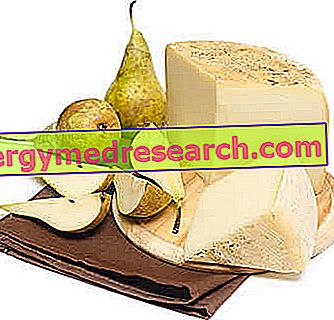Botanical name : Polygonum cuspidatum Binomial name: Fallopia japonica Synonyms : Japanese knotweed or Japanese honeysuckle Family : Polygonaceae Description : perennial herbaceous plant Part of the plant used: root Physiological and health aims : antioxidant, anti-inflammatory, vasorelaxant Active constituents : resveretrol, emodin, polydatin |


The plant Polygonum cuspidatum is native to eastern Asia, and is currently widespread in North America and Europe, where it is classified as an invasive species in several countries (it was introduced in the list of the 100 worst invasive species compiled by the World Conservation Union) . The success of the colonization of the species has been partly attributed to its tolerance with respect to a wide range of soil types, pH and salinity.
Botany Description
Polygonum cuspidatum ( Fallopia japonica ) is a perennial herbaceous plant belonging to the Polygonaceae family.
The plant is equipped with vigorous and hairless stems, which can reach a maximum height of 3-4 meters. The Polygonum cuspidatum produces long and sturdy underground stems (rhizomes), capable of developing in depth.
The leaves are alternate and oval, with 7-14 cm of length and 5-12 cm of width, truncated at the base and provided with an internal margin. The flowers are small, cream-white in color, produced in late summer and early autumn in racemes (bunches) erected 6-15 cm in length.
Polygonum cuspidatum is also called "false bamboo", as a member of the Polygonaceae family has hollow stems with several raised nodes that give it a similar appearance to the original, even if they are not closely related.
Therapeutic indications of Polygonum cuspidatum
Because of its presence in China, Polygonum cuspidatum has historically been used in traditional Chinese medicine, especially as a laxative herb and, occasionally, as a food in Asian cultures.
Different therapeutic applications of Polygonum cuspidatum are known, as the derivative extract is indicated for the treatment of various pathologies. Currently, this plant has assumed considerable importance in relation to the high concentration of resveretrol in its rhizomes.
In fact, the peculiarity of the dry extract of the root of the plant lies in the content of resveretrol, 400 times higher than in grapes and its derivatives; the Polygonum cuspidatum represents the major natural source of this phytocomponent, which contains in its most active biological form.
A further advantage in taking Polygonum cuspidatum is the use of a natural extract, which in addition to the properties of resveretrol, allows the benefits of the other active components present (phytocomplex) to be exploited, which complete the functional activity of the extract, in addition to to favor its bioavailability.
The extract deriving from the root of Polygonum cuspidatum is indicated for the treatment of:
- hypertension
- prevention of cardiovascular diseases
- hypercholesterolemia (excess cholesterol in the blood)
- hyperlipidemia (high levels of lipoproteins in plasma)
- prevention of neoplasms
- gastrointestinal diseases
Active principles
In the dry extract deriving from the root of the plant, the main bioactive constituent is resveretrol, a phenolic derivative responsible for various therapeutic properties: it is able to perform antioxidant and cardioprotective activity. The biological activity of resveretrol is supported and enhanced by the presence of other components present in Polygonum cuspidatum : emodin and polydatin .
Resveratrol properties
1) Cardioprotective activity:
- Antioxidant property: it has a protective action on the cardiocascular system
- Anti-thrombotic function: inhibits platelet aggregation by intervention on the synthesis of eicosanoids (fatty acid derivatives) and the modulation of arachidonic acid metabolism
- Similar estrogen action (phytoestrogen): resveretrol has a chemical structure similar to diethylstilbestrol, a synthesis molecule with an estrogen-like action. Similarly, resveretrol is able to activate estrogen receptors in a competitive way. Given that the action associated with this hormone provides for the influence on cholesterol levels and blood flow, this alternative mechanism of action can help prevent cardiovascular disease.
- Decreased blood pressure: induces vasodilation due to the hypotensive action of resveretrol, due to the latter's intervention on the metabolism of nitric oxide.
- Reduction of cholesterol and triglyceride levels: it protects the LDL (low density lipoproteins, responsible for the transport of cholesterol to the cells of the body) from the oxidative process that degrades them. Lowers total cholesterol levels and reduces circulating fats. In particular, there is a decrease in blood levels of VLDL involved in the onset of arteriosclerosis (tissue hardening of the arterial wall).
2) Anti-inflammatory activity
3) Antitumor prevention:
- The resveretrol contained in Polygonum cuspidatum promotes prevention by performing antineoplastic activity: it exhibits an antioxidant and antimutagenic action.
- It regulates mitogenesis: it inhibits a specific tyrosine kinase, an enzyme that intervenes in the translation of the cellular signal (antiproliferative, inhibitory action in tumor promotion and progression).
Properties of Emodina
Polygonum cuspidatum is a concentrated source of emodin (it is an anthraquinone derivative); for this reason the plant root extract is used as a nutritional supplement to regulate intestinal motility.
Emodin, contained in the extract of Polygonum cuspidatum, has a mild laxative effect in doses of 20 to 50 mg a day.
In addition to the laxative properties, emodin also has the following effects:
- Antineoplastic activity
- Antimutagenic activity
- Anti-inflammatory activity
Properties of Polydatin
- Inhibits platelet aggregation
- It protects myocardial cells from oxygen and glucose depletion
The intake of Polygonum cuspidatum also determines other effects:
- stimulates the immune system: increases the production of interleukin 2 (promotes the differentiation of T lymphocytes) and antibodies
- protects the gastric mucosa, slightly inhibiting gastric secretion
- modulates antipyretic action
- plays an analgesic action
Pharmaceutical Form
The dry extract of the root of Polygonum cuspidatum can be used for the preparation of capsules, tablets or syrups. The concentration of resveretrol in the dry extract can vary from 5% to 95%. The use of Polygonum cuspidatum extract alone or its combination with other nutraceutical components, allows to obtain potentially very effective preparations for food integration.
Intake doses
To date, an ideal dosage has not been identified for the Polygonum cuspidatum extract, but the suggested daily intake is 25-200 mg (1-2 times a day).
Contraindications and side effects
No data on acute toxicity are reported regarding the intake of Polygonum cuspidatum extracts. In some cases, high doses (2-5 grams per day) have caused transient intestinal problems in humans. No interactions with drugs are known.



